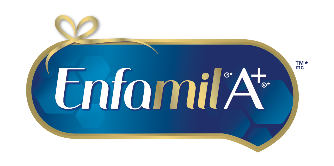Article Summary:
- Cradle cap, also known as seborrheic dermatitis, appears as yellow, scaly patches on a baby's scalp, and it's common in infants, usually resolving by the first birthday.
- The condition is caused by a buildup of sticky skin oils and shedding skin cells. Cradle cap does not indicate poor baby care.
- Cradle cap does not need to be treated as it often goes away on its own.
- Treatment for cradle cap at home involves applying oil to the scalp and gently removing with a soft brush or fine-tooth comb. Then wash the scalp with baby shampoo. If cradle cap persists, consult a doctor.
What Is Cradle Cap?
Cradle cap, also known as seborrheic dermatitis, can look like yellow, scaly patches on your infant’s scalp.1, 2 Redness is sometimes present surrounding the scales.2 You may also notice redness on other parts of your baby’s body, like the armpits, behind the ears, the folds of their neck or their diaper area.2 If you notice cradle cap on your infant’s scalp, you can rest assured knowing it’s common in babies and is not harmful.1 It usually resolves by a child’s first birthday.1 Cradle cap isn’t contagious, so you don’t have to worry about spreading it to other infants.1
What Causes Cradle Cap?
The buildup of sticky skin oils and shedding skin cells can cause cradle cap.2 Don’t worry—this buildup of cells is normal and doesn’t mean that you’re not taking good care of your baby.2
How Can You Treat Cradle Cap at Home?
If cradle cap doesn’t bother you or your baby, it doesn’t need treatment.1 It typically goes away on its own.1 However, you can easily treat cradle cap at home with oil, a soft brush followed by a bath.1 To treat cradle cap, you can rub mineral oil, baby oil, vegetable oil or petroleum jelly on your baby’s scalp one hour before shampooing.1 The oil will help loosen the scaly skin.1 You can also leave the oil on your baby’s scalp overnight.1 When it’s time to shampoo, wet your baby’s scalp and then gently scrub his or her scalp with a soft-bristle brush.1 You can also use a soft toothbrush.1 Gently rub their scalp for a few minutes, making sure you don’t brush too hard or put pressure on their head.1 Next, wash their scalp with baby shampoo and towel dry them.1 If you don’t have time to wash your baby’s scalp, you can try using a fine-tooth comb to carefully remove the scales.1 Contact your doctor if cradle cap doesn’t resolve after treatment.1
Cradle Cap versus Eczema: What’s the Difference?
If you’re not sure what the difference is between eczema and cradle cap, you’re not alone. Eczema is an entirely different skin condition that causes red and itchy areas on the skin.3 Bumps on the skin from eczema may blister, ooze or crack.4 Babies typically have eczema on their forehead, cheeks and scalp.3 Eczema is chronic and doesn’t go away quickly.3 It can’t be removed with mineral oil like cradle cap.3 Babies with eczema may need medication to treat the rashes.3 If you’re unsure if your baby has eczema or cradle cap, contact your doctor to identify the condition and put you at ease.
If your child is presenting with eczema from a suspected cow’s milk protein allergy, Nutramigen® A+® with LGG® has been shown to reduce symptoms in as early as 3 weeks.^ Talk to your doctor if you suspect your baby has a cow's milk protein allergy.
So, if you’re baby has cradle cap, just know that it’s not a medical problem. You can treat it, if you prefer, but it will likely go away on its own as your little one grows.1
^ HCPS evaluated eczema in infants with suspected cow's milk protein allergy and reported improvement in 86% of infants by the follow up visit.





